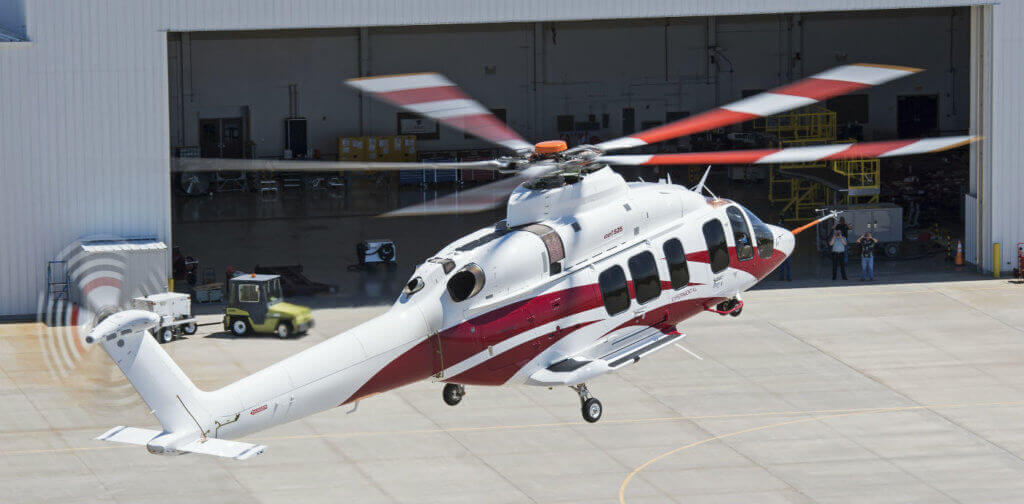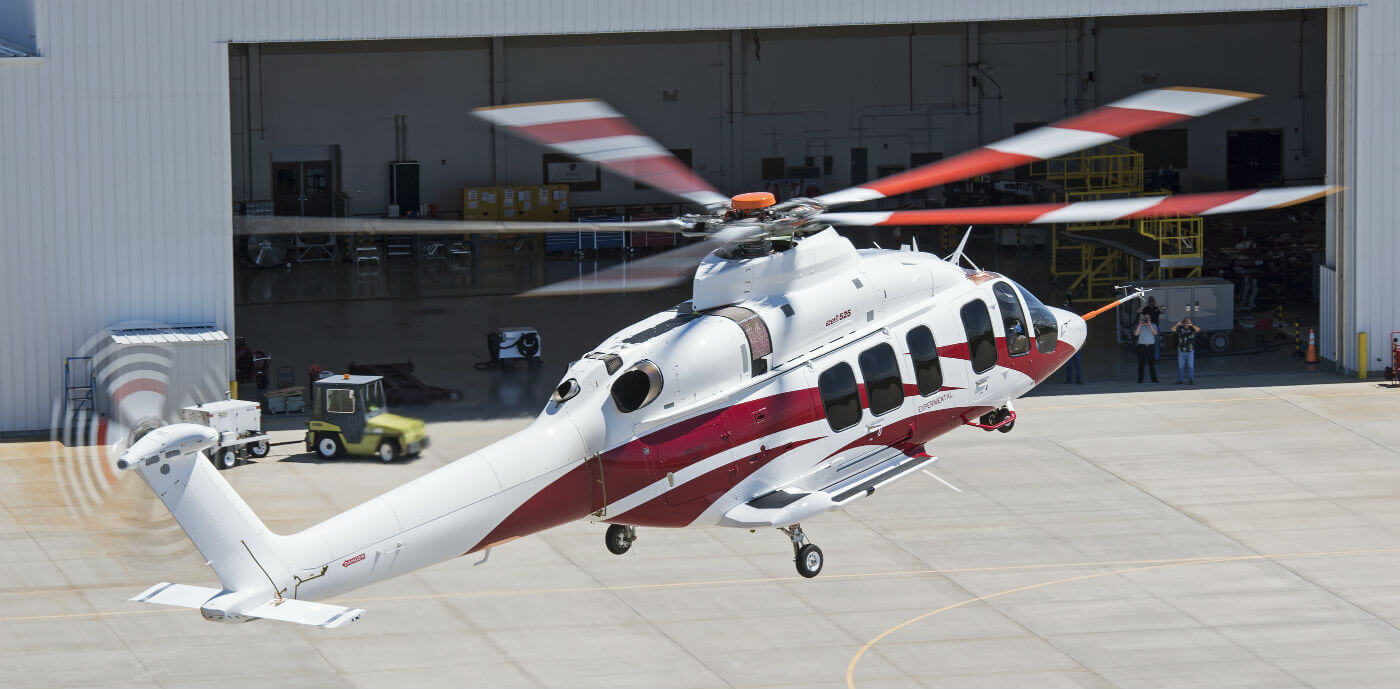Bell Helicopter is hoping to be able to resume flight tests of its 525 Relentless “within several months,” and is coordinating with the Federal Aviation Administration (FAA) and National Transportation Safety Board (NTSB) on a return to flight date.

The program has been grounded since July 6, when the first 525 flight test vehicle crashed during flight testing, killing the two test pilots on board. The NTSB’s investigation into the crash, which took place south of Bell Helicopter’s XworX facility in Arlington, Texas, is ongoing.
“The NTSB and Bell Helicopter have focused the investigation on a sequence of events for which corrective actions are being implemented,” said Larry Thimmesch, vice president of the Bell 525 Relentless program. “It’s an important statement — it means we’re moving forward. We’re coordinating with the FAA and NTSB to resume flight tests in the next several months.”
While the program is grounded, FTV2 and FTV3 are undergoing a variety of modifications, with the majority being production maturity changes typical of an aircraft development program, Thimmesch said.
However, “we do have some corrective action related to that accident,” he added. “Obviously, we need to wait until the NTSB comes out with a summary of the findings to talk about what goes on; what we’re doing as a corrective action process.”
Bell is currently building aircraft 4 and 5, which will be the last two aircraft in the certification program, in full production configuration. Those aircraft will be used to certify the majority of the 525’s kits and are scheduled to enter flight test in late summer or fall this year.
Thimmesch said Bell has been “integrally involved” with helping the NTSB with its investigation, and has taken the opportunity to forensically examine its own processes.
“It’s a perfect opportunity for us to look at process improvement, just to validate everything that we’re doing so that when we go back to the air, we’re completely certain that we’ll provide a safer, more reliable aircraft as a result of that,” he said.
Despite the lack of flight activity, ground testing of the 525 has continued apace in the manufacturer’s Relentless Advanced Systems Integration Lab (RASIL).

“Most of the testing that we do does not require the aircraft in the air,” said Thimmesch. “I can test the entire aircraft with electrical tie-in, the actuation, all the avionics, all the hydraulics in that systems integration lab. . . . It is really game-changing in the capability that we have to learn to do those great things without flying the aircraft.”
Before the accident, Bell had been targeting the end of 2017 for certification of the super medium 525, but the manufacturer is now looking to complete the process by the end of 2018.
Thimmesch said the remaining tests that had originally been scheduled to be completed by FTV1 have been reallocated to different aircraft — another reason the other two flight test vehicles required modifications.
“We had gone through the majority of our initial development envelope expansion, so we understand the aircraft very well, [and were] getting close to going to the next phase,” he said.
In terms of technical support, the 525’s maintenance manuals and flight manuals have been in development for some time, and have been used in flight test to validate the documents. On the maintenance side, 10 of the 13 maintenance training group meetings that are required for certification will have been completed by the end of this year, said Thimmesch.
Over at the Bell Training Academy, a 525 full-flight simulator is now being installed and will be operational by third quarter of this year.
The 20,000-pound gross weight 525 offers a standard seating configuration for 16 passengers and two pilots, with a typical cruise speed of 155 knots for distances of over 500 nautical miles. When certified, it will also be the first commercial fly-by-wire civil part 29 helicopter.









